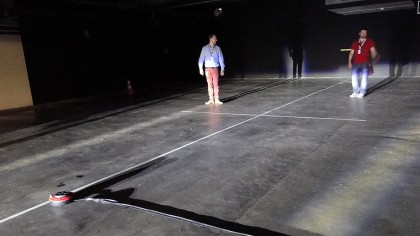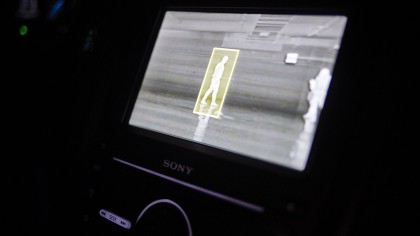Robots that press buttons for a living, Ford and the incredible car tech you didn't know existed
This is what it takes to get ahead in the motor industry these days

New Spot Lighting technology uses a camera to detect pedestrians, cyclists and even animals, and highlight them using the car's headlights.
Standing in an underground garage and seeing how the Mondeo test car picks out and illuminates pedestrians in an instant is a startling demo of the tech. Suddenly, conventional headlights seem seriously old hat.
"Many people who drive at night have had to quickly react to someone or something suddenly appearing in the road – as if from nowhere. Ford's Camera-Based Advanced Front Lighting System and Spot Lighting help ensure the driver is quickly alerted to people or animals that could present a danger," says Ken Washington, vice president, Ford Research and Advanced Engineering.
The Advanced Front Lighting System is another slice of cutting-edge car tech that Ford is bringing to the masses. This one is in development and not quite ready for sale but the system in development has a couple of tricks.

A kind of 'smart headlight', AFLS widens the beam at junctions and roundabouts to better illuminate hazards that are not in the direction of travel.
As for fully automated cars, you won't be surprised to learn Ford is working on that, too. Ken Washington told us he expects Ford to have developed cars capable of operating fully autonomously in at least some situations within five years.
UK government research shows shows one in five accidents happen on unlit roads. Ford has a nifty new technology to help reduce those numbers, its advanced lighting.
Get daily insight, inspiration and deals in your inbox
Sign up for breaking news, reviews, opinion, top tech deals, and more.
The basic idea involves infrared cameras to detect people or large animals based on their body heat. Yup, it's Predator-style tech complete with a display in the car that picks out objects and highlights them ominously in red or yellow.
But instead of marking them out as prey to hunt down mercilessly, the idea is to give the driver advanced warning. Along with the display, the system uses a pair of independently movable spotlights to highlight objects. Overall, Ford reckons the system gives the driver an additional two to three seconds to react and that can make all the difference on a poorly lit road.
Current page: Eye of the tiger
Prev Page Death-proof cars that see around corners Next Page Can you smell something?Technology and cars. Increasingly the twain shall meet. Which is handy, because Jeremy (Twitter) is addicted to both. Long-time tech journalist, former editor of iCar magazine and incumbent car guru for T3 magazine, Jeremy reckons in-car technology is about to go thermonuclear. No, not exploding cars. That would be silly. And dangerous. But rather an explosive period of unprecedented innovation. Enjoy the ride.